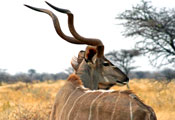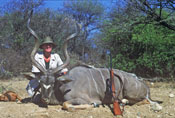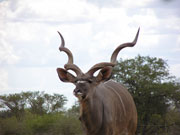 |
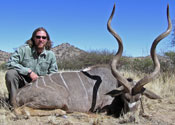 |
THORSTEN MEIER - Professional Hunter
P.O.Box 40520, Ausspannplatz, Windhoek, Namibia
Tel/Fax: +264 61 255195, Mobil: +264 81 1282425
Email:info@ndandi.com
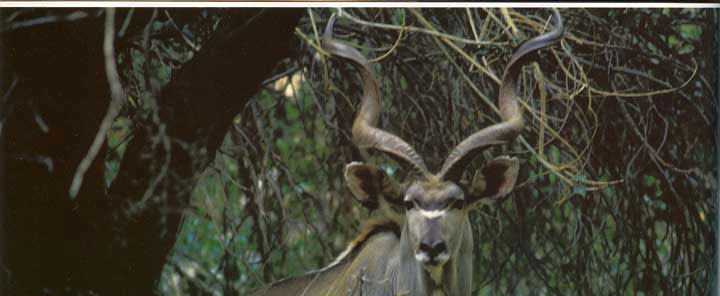 |
|
Copyright 2010 Ndandi Safaris CC. All Rights reserved
|
|||||||
 |
“If he were never to write again, his name will live as long as the English language, for Green hills of
A deep passion is almost a necessity for a writer to produce an everlasting classic. It is known that Ernest Hemingway was a passionate big-game hunter. But there is a more specific topic around which his Green hills of
The passion for the elusive, ghostlike, magnificently beautiful greater kudu, the narration dramatically tensed by the fear of failure, of not being able to obtain this dream trophy, the wish “but the one thing that I really want, is a kudu” at times reduced to the resigned wish “if I only could see one”.
One almost feels bad about the description hereunder of the bagging of five sixty-inch kudus during just one season in one African country.
But, after all, Hemingway hunted amongst the green hills of east Africa and a grey animal, in all its appearance and behaviour adapted to concealment, is not really at home in green hills. His real and true home is the stark grey thorn-bush wastes, the harsh rocky outcrops and dry desert ridges. Here his sublime beauty is put into dramatic contrast. It is not without reason that
“The moment I recognise him, my heart starts to beat like a racehorse’s after a ten-mile run and my mouth becomes as dry as the
The German client Hans Willens and his professional hunter, Thorsten Meier returned after a morning stalk somewhat frustrated in the midday heat on farm Heidehof near Omaruru. They were expecting nothing when suddenly in a dry riverbed they spooked three kudu bulls. One of them appeared big and ponderous when seen from the back, his neck bulky and seemingly an outstanding trophy. The kudu stopped to look back and in the rush of the unexpected, Hans fired somewhat hastily, hitting the bull too far back. In the afternoon, the hunters followed the wounded bull and Thorsten was able to dispatch it. “It was a great moment realising just how big it really was. It now became apparent that this bull was of outstanding body size. When put into position for the photo, the horns reached up to my shoulder.” On measuring the trophy afterwards it turned out to be 63 and 61 inches.
“This bull was huge. I had hunted many kudus in my life and was still not sure of the size of what I really saw.” These were“I ran up to the bull as he was in his last death throws. He was beating the points of his horns against a nearby tree. I was afraid he would break the points, so I grabbed onto a horn and held it until he stopped moving. I stepped back and admired the bull. I realised that the trophy was far greater than any expectations I’ve ever had. It was one of the biggest kudus I’d taken in my career as a professional hunter. A feeling of great achievement came over me. This kudu was one of the highlights in my life as a hunter and will always remain one of my most special memories. With the last rays of the sun I took some photos.” This was how Felix Marnewecke expressed his feelings after taking a kudu of 61 inches near Omaruru in July 2005.
Willa Liebenberg and his Spanish client, Paco Anaya, searched for a big kudu for days. They were not too perturbed, because after all, Paco had taken a hartebeest and by then had actually given up. It was early in the morning of the fifth day and they were approaching a koppie on farm Autabib. Suddenly, from nowhere and quite unexpectedly, there were at least four big bulls in the thorn bushes. “Take him now – the big one!”
Paco, says Willa, fortunately knew which one he meant, and after his experience in
the thoughts of Danie van Ellewee when a big kudu slipped away from him. A few days later his next client, Mike Orear from the
“Green hills of
And not reduced to the mere collecting of trophies by any means often reflected by the way trophy photos are taken, focusing only on the trophy against heaven, dwarfing the hunter crouching far in the back and distorting the animal by the angle it was taken. This is why the photo taken way back in the seventies, by Colonel Ashley and Hans Denk, in its own way, is also a classic, reflecting the unfathomable passion of a hunter to possess, by having hunted, an animal beautiful beyond words – even in death.
